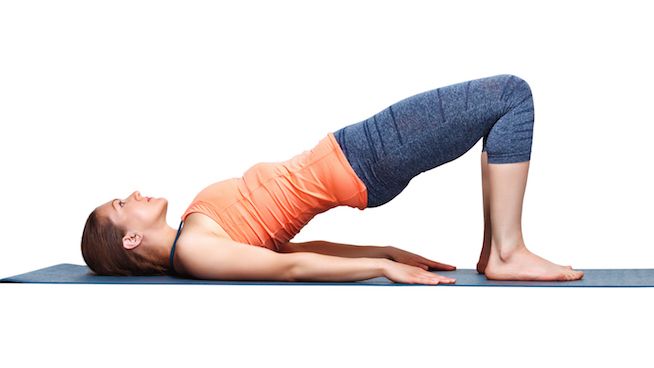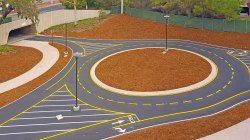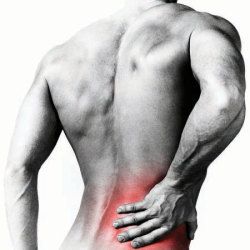Safety & Injury Prevention Articles
The Top Benefits of Glute Bridges
YOU’LL HAVE GREAT POSTURE: When you spend the majority of your day sitting, your glute muscles can get weaker, while the hip flexors in the front of your thighs can shorten, making them feel tight.
Eventually, you will end up slouching as your tight hip flexors pull you forward and your glutes aren’t strong enough to pull you upright.
But when you practice glute bridges regularly you are targeting your glutes and your lower back muscles, those muscles that are meant to hold your body upright will be getting stronger.
Strengthening the glutes and erector spinae helps you keep your posture upright whether you’re standing or sitting throughout your day.
STRENGTHENS YOUR CORE: Although the exercise targets the butt area, the glute bridge does a great job of activating and strengthening your core stabilizer muscles.
The transversus abdominis and multifidus muscles enclose your entire midsection. They are designed to support the spine and when reinforced will hold the stomach in like a corset.
This exercise contributes towards flattening your tummy, focusing on the muscles in your six-pack, and working the obliques, which will give you a more defined waistline.
moreOH NO! I Crashed my Bike...Now What?
When the arrival of spring means you haven’t ridden your bike outside for several months, which is probably the case for a good portion of the Midwest cycling community, it’s likely that it will take you a few rides to get your handling skills back in order. Little things that you’ve ceased thinking about as you toiled away on the indoor trainer endeavoring to raise your FTP by a few watts need to be relearned. Sure you still remember how to ride a bike, but little things like how grippy your brakes are, how much to lean your bike in a turn or how to hold a straight line in the aerobars may all be a little rusty.
As simple as they seem, these small elements are challenging enough when on your own. Add in group dynamics and you face an entirely different set of concerns. Not to mention that winter has ravaged the roads in most places, creating new seams, potholes, debris of various kinds and other potential hazards.
At Vision Quest, we’ll make use of our first few organized outdoor rides to help our athletes re-acclimate to safe and effective outdoor riding, and we encourage you to keep the first rides with your group low-pressure for the same reason. We all know that awareness and communication go a long way to creating a safe riding experience for all involved.
moreWhat about Round-Abouts?
As you've likely noticed, round-abouts are popping up on several of our common riding routes, most notably Everett and Hunt Club Roads. There is also one in Mt. Horeb as part of the Madison route. Although these are not common in the states, they are a staple of European road construction and traffic statistics bear out their efficacy with regard to traffic flow and reduction in incidents.
However, since many people have seldom or never encountered them, the "rules of the road" aren't always clear when it comes to round-abouts. The following tips apply to all vehicle users, both cyclists and drivers.First, vehicles in the round-about have the right-of-way. Ever noticed the sign that marks the entry to the round-about? It says "YIELD". That doesn't mean you don't have to stop if you can get there first, it means you need to stop for vehicles already there and not proceed until you can do so safely without impeding other users. It is important to look for traffic not just coming from the right and left, but also traffic coming from the opposite direction you are headed and intending to go all the way around the round-about to make a left-hand turn. Secondly, if you are in the round-about you need to keep moving.
moreBad News: Accidents Happen—Good News: The ER Isn’t Your Only Option
For injuries that can’t wait, but don’t necessarily require a trip to the Emergency Room, IBJI OrthoAccess immediate care clinics treat you faster and can cost up to 80% less than a visit to the ER. OrthoAccess is a walk-in clinic designed to quickly and affordably treat simple fractures, sprains, strains, work and sports injuries and more. Staffed by certified IBJI orthopedic specialists and supported by advanced diagnostic technology. IBJI OrthoAccess clinics are even open Saturdays (and on Sundays at the Glenview location).
OrthoAccess Advantages
- Be seen without an appointment
- Be seen same day and in significantly less time compared to an ER visit
- Get great care from IBJI orthopedic specialists
- Have onsite access to advanced diagnostic technology and services
- Receive treatment in an environment that’s calm, family-friendly and professional
- Save up to 80% compared to the cost of an ER visit
Read more here and find a location near you
moreWhat NOT to Do at a Stop Light
We’ve all seen it. (And let’s be honest, we’ve all done it!) Waiting at a stop light, the light turns green and the group takes off while we’re left waiting, trying to get our food back in our pockets or our bottles back in the cages. This article is for new riders who may not have had that experience yet and for the more experienced among us that still occasionally forget. It’s one part safety and one part practical advice. So without further ado, here is what NOT to do at a stop light:
- Don’t roll through a red light. Not only is it illegal, but it’s a great way to turn yourself into a hood ornament. If it’s yellow, you should already be thinking RED.
- Don’t be anywhere to the left of the centerline of the road. The only time you have any reason to cross the centerline is if you’re in the middle of executing a left turn. (Or your legs are feeling great and you’re passing cars in legal passing zones!)
- Don’t pass and stop in front of stopped cars. It only puts you in the way when the light turns green. Keep your place in line and everything will flow smoothly.
- Don’t mass up to the line and unnecessarily spill into turn lanes. Again, it just slows traffic that could otherwise keep moving.
- Don’t have your bike pointed any direction other than forward.
- Don’t unclip from both pedals. You’ll want to be ready to move right away.
- Don’t start eating or drinking when the light is about to turn green. If you do, you’ve now got one foot and one or both hands off the bike.
- Don’t start checking messages on your phone. This is the same idea as not eating and drinking. Hopefully by now this one is self-explanatory!
- Don’t find yourself in too big a gear when the light turns green. Think ahead and shift to a smaller gear that will be easier to pedal the first few strokes.
- Don’t spend a quarter-mile looking down trying to get your feet into your pedals. Practice with your pedal system so that you can quickly and confidently engage your cleat and start moving. If all else fails, learn to just put a foot on the pedal and start pedaling, then work on seating the cleat once you're safely in the group
Plantar Fasciitis
Plantar fasciitis is characterized by stiffness, inflammation and gradual degeneration of the plantar fascia (fibrous connective tissue) on the plantar (bottom) aspect of the foot. A less common cause is associated with a bone spur of the heel.
WHAT CAUSES PLANTAR FASCIITIS?
There are a number of factors that can contribute to plantar fasciitis including:
- Repetitive impact resulting in micro trauma or stress to the heel tissues that may cause inflammation or calcification of the fascia
- Inflexibility of the calf muscles
- Flat (planus) or high (cavus) arched feet
- Unhealthy foot pronation
- Limited ankle range of motion
- Excessive body weight
- Poor footwear
- Irritation of the small nerve that runs under the foot where the fascia attaches to the heel bone
In our office we most commonly have patients with repetitive micro trauma to the plantar fascia resulting in adhesion and scar tissue formation.
SIGNS AND SYMPTOMS:
This injury can manifest in several ways. The most common signs and symptoms include:
- Pain and tenderness on the sole of the foot usually localized at the heel bone when standing or walking
- Pain following your activity
- Pain associated with the first few steps taken in the morning when getting out of bed or after prolonged sitting
Low Back Pain (LBP)
Included in this blog is a brief introduction to LBP and the steps you can take for prevention and recovery. As athletes, it is important to understand LBP, how to reduce the risk of injury and how to enhance your performance. Today we will provide you with a basic knowledge of LBP, if you have further questions feel free to call, email or just talk to one of us if you see us at VQ.
Let’s start our journey of LBP by understanding the anatomy of the spine. The low back is comprised of vertebrae, ligaments, muscles, blood vessels, nerves and discs. The vertebrae are the bones that make up the spine. The ligaments help to hold the bones and other structures in place. Muscles attach to the bones and help produce functional movements. Blood vessels run throughout the body and deliver nutrients to tissues. Nerves run throughout the spinal column to send and receive information. The most notable part of the nervous system found in the spine is the spinal cord. Lastly the most notorious anatomical structure in regards to LBP, are the intervertebral discs. Discs are fibrous and gelatinous structures that sit between the vertebrae and provides cushion for weight bearing activities and movement. Together these structures unite to form the low back, each having the ability to produce LBP.
more




